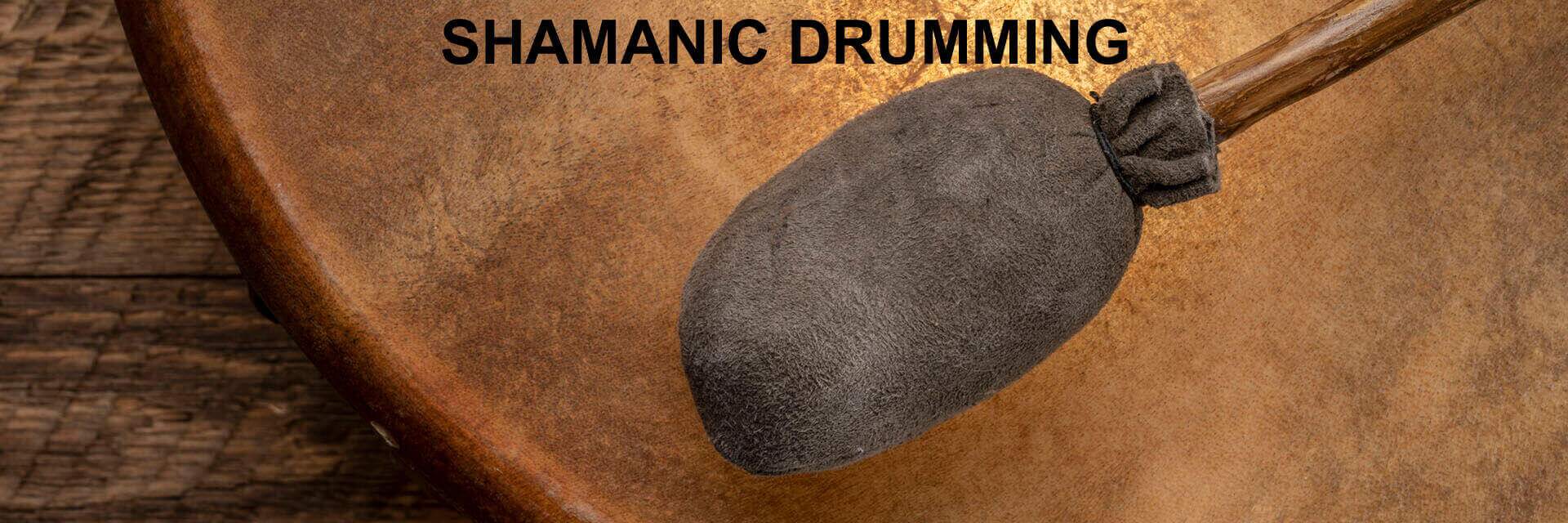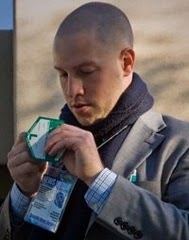


From basements in Queens, New York to churches in Paradise Valley, Arizona, drummers are using rhythm to heal body and mind, and doctors are listening to it.
Throughout history, indigenous people from China to Africa and on to the Americas have believed that music-particularly rhythm and drumming-is intertwined with healing and wellness.
Aboriginal communities in what is now Siberia, for instance, would sing, dance and drum to build up enough psychic energy to send a shaman on a journey to reach his healing spirits. Studying Ngoma-a type of ritual healing practiced in Central and Southern Africa-starts with learning traditional dances and drumbeats. In fact, shamans often refer to their drum as a horse, since it carries them on their journeys to the spirit worlds.
In Western culture, however, music has disengaged from medicine, and more by design than attrition-drums were at one time banned Scotland and Ireland. And when Anglo populations immigrated to the Americas, they brought with them that puritanical distrust, prohibiting the music-healing customs of Native Americans and Africans transported to the Americas.
The modern West thrives on empirical evidence, so too often sound healing techniques are seen as hocus-pocus, new age nonsense. But over the last few decades, the United States has reawakened to the possibilities of music as medicine. What were centuries ago acts borne simply from instinct are now gaining the support of science.
Some such research is being conducted by Milford Graves, a professor of music at Bennington College in Vermont. From his house in Queens, New York, the musician and former lab technologist is bridging the gap between indigenous intuition and modern science.
"In African drum systems there's always this relationship between the heart and the drum," Graves says. "I wanted to understand physiologically, how is it possible for the heart to function like a drum and vice versa?"
Graves, 68, is a prominent jazz drummer and percussionist from the 1960s New York avant-garde and free-jazz movements. Since then, he's transformed his passion for percussion into pioneering research on correcting irregular heart sounds and rhythms. This work started by cataloging and categorizing heart sounds.
"This is not unusual, how great things always happen by accident," he says. "I just wanted to record the heart and see what the heartbeats sound like."
Graves largely taught himself the science and technology behind his research. In the 1970s, using an electronic stethoscope, Graves started recording friends' hearts in his basement. He noticed that healthy heartbeats are actually fairly irregular, with the waveform duration consisting of variable time values.
"I found that more heartbeats just don't beat like, Boom boom cha," he says. "Heartbeat cycles with asymmetrical time values are more healthy. This asymmetry is called the chaotic heartbeat."
Cardiologists now know this is a healthy way for the heart to beat because, if startled, it can alter its rhythm quite easily, avoiding strain.
"Your heart has to make adjustments to the kind of pathology that's taking place in your body," Graves says. "If you're getting ready to have an impending heart attack or some crisis going down, the accentuated asymmetrical time values-the arrhythmia-is what can save your life, man."
Graves also applied his musical training to a budding medical theory that heart conditions can be diagnosed by listening to the pitch changes of heartbeats.
"Sometimes some of my friends would come by who are musicians and we would sit around and we'd listen to heartbeats and I'd say, What's the pitch of that first heart sound?" Graves says. "Everyone would try to figure it out, but it was kind of difficult because it wasn't a frequency or pitch that you would learn at the conservatory. The majority of the frequencies were between the semitone, the smallest interval of a piano tuned in equal temperament."
Graves decided he'd need more accurate recordings. In 2000, with money from a prestigious Guggenheim Fellowship, he was able to upgrade his equipment. Now, he uses special stethoscopes crafted to detect extremely low-frequency sounds and records them into Pro Tools, a common sound-recording system that can store and display the heart sounds as waveforms. Graves then imports these recordings into LabVIEW, a graphical programming system that contains special algorithms that he's designed to detect the heartbeat's frequency, pitch changes, musical note, or even how flat or sharp it is. The LabVIEW machine is then connected to a set of cables.
"The processed heart sounds are outputted from LabVIEW and are connected by audio cables to surface electrodes placed on acupuncture and related points on the head," Graves says. "These points are related to areas in the brain that affect heart function."
Then, having modified the digital heartbeat to what he estimates is a healthier sound, Graves inputs a person's own processed audio-electrical heart sound back into his or her body.
"I lay out possible highly aesthetic kinds of rhythm forms. Not what I think as a composer; I'm taking this from what your information or your biology is telling me," he says. "If your hear rate is too slow or too fast, I would ask myself, What would be a good adaptive heart rate to use? You activate the body system to do the opposite. So basically if your body is exposed to a large amount of high-energy, high-electro voltage, the body will try to balance that out by activating the neurovascular system, telling the body to calm down."
Graves then records the heart again to check for changes-with mixed results, so far. He says he's basically attempting to train the heart to operate healthily in high-stress situations that could cause arrhythmia or cardiac arrest. This principle is similar to the theory behind defibrillation or using a pacemaker, where the heart is shocked into a different rhythm, says Baruch Krauss, MD, a pediatric emergency physician at Harvard Medical School.
"It parallels cutting-edge research going on in some leading medical centers," Krauss says. "He's defining in a very unique perspective the tonality of normal and abnormal heart rhythms."
Krauss, one of the few doctors who has actually visited Graves' laboratory and studied with him, adds that Graves' research is far from conclusive; though when he refines his methods, it should be put to clinical trials.
But Graves willingly admits he's at the research stage. After The New York Times published an article about his work, he was deluged with correspondence from people begging him for treatment. But the fact is, Graves is "not so quick to say I have the cure-all," he says.
"You're dealing with something that's personalized. Sometimes it lasts a long time, sometimes it doesn't hold," he says. "This is not something that's pretty well set and has been established so that you can give out very definite answers."
That's the main problem at this point, says Barbara Crowe, the director of music therapy at Arizona State University. "If you're looking for replicable effects, you're not going to find them through music," she says.
"There's abundant research evidence that sound and certainly drumming and rhythm affect physiological changes," says Crowe. "What the research shows, however, is that the impact is imprecise and variable and very individualistic."
Nobody is doing more research to bring precision to the process than Barry Bittman, MD, a neurologist and the CEO and medical director of the Mind-Body Wellness Center in Meadville, Pennsylvania. He and his colleagues have found that drumming is primarily a stress reliever.
But that stress relief, according to his research, is itself just a start. A less stressed body could lead to better circulation, lower risk of heart disease, a healthier endocrine system and a stronger immune system. So through extensive trials he developed a specific protocol called the HealthRHYTHMS Group Empowerment Drumming program, sponsored by the drum company Remo, which involves combinations of physical activity, drumming and talking.
"We know that when a person is stressed, there's clearly an effect on the immune system," Bittman says. "The protocol is built on getting people comfortable. When people are comfortable, that's when their biology starts to change."
The protocol is practiced around the world, and here in the Valley, Frank Thompson is one of its facilitators. His company, AZ Rhythm Connection, incorporates group drumming-like drum circles using bongos, congas, djembes, shakers and other percussive instruments-with physical activities like yoga as "gateways into better mind-body health awareness."
"If you listen to the wisdom of the ancients, if the mind's not well, the body's not well," says Thompson. "So I'm giving people platforms to do both."
The goal is to be rhythmically healthy. "We believe that rhythm is all around us, whether it's day or night, whether we're going to work or coming home," Thompson says. "HealthRHYTHMS just gets you in touch using recreational music through the process of building rhythm."
Recreational music is what Thompson calls music for fun. Young and old, short and tall, he says, gather at his sessions to drum.
"In recreational music, the emphasis is not on being great, musically. The instruments are tools where we collectively interact with one another," he says. "Humans are collaborative beings at our best. And with the recreational music and Wellness Through Rhythm, you get to come in and collaborate with others and socialize with others in an environment that's comfortable and helpful. Doing all that together is a great way to heal emotionally or sustain yourself emotionally and also practice physical activity with it."
As with Graves research, there's no clear-cut resolution to the program-if you drum twice a week for three years you won't be cured of anxiety. But this ambiguity actually serves to offer tailored wellness to a variety of troubles.
Chandler resident Joy Glaser, for example, has attended two or three classes per week for four years. The stress of divorce and the death of her parents coupled with her natural shyness grew into seemingly insurmountable loneliness a depression.
"I had this big hole, and I needed something," Glaser says. "I got into drumming and the first class was like, Wow. This is phenomenal!"
To her, the social aspect offers a chance to bond with others-something she's not used to. The actual drumming, she says, is akin to sex: You can come into it with all kinds of pain, mental and physical, but when you're at it, you let go of it all. It's a powerful force, she says.
"The first time I ever released, it was kind of scary. It was scary to give up everything," she says. "It's almost a euphoria kind of thing. There's no pain, there's nothing wrong with the world."
This is exactly the kind of reaction Bittman says he expects. "It's an emotional, physical process, meaning it involves the whole body," he says.
"We're hardwired for music," Bittman adds. "The process of playing a musical instrument enables creative disclosure-to bring to the surface things that are deep inside."
In the years that Thompson's been leading the classes, he's seen a number of transformations. People came in one person and left another. And perhaps the research hasn't yet caught up to explain these changes, nor the intuitive forces that spurred indigenous Siberians and Africans centuries ago and still drive modern Westerners to pick up a drum and bang away. But "proof" aside, Thompson says, one thing needs no explanation: "It's fun!"
Bio
Daniel Newhauser is a 2009 graduate of Arizona State University's Walter Cronkite School of Journalism.
Preview our Digital Books and Music
Affiliate disclosure: As an Amazon Associate, we earn from qualifying purchases. You can learn more about our editorial and affiliate policy here. Music Attribution.
© 2001 - 2025 Talking Drum Publications